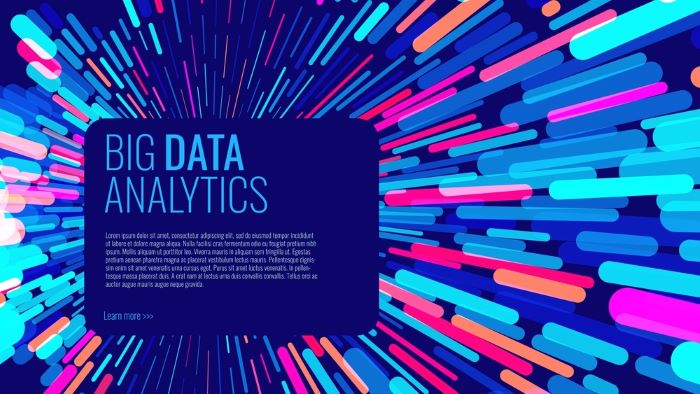What is Data? A Comprehensive Guide to Understanding Information 2024

In today’s digital age, you’re constantly surrounded by data. But what is data, exactly? It’s the lifeblood of our information-driven world, shaping decisions and driving innovation across all sectors. From the symbols on your screen to the information stored in massive databases, data has a profound impact on how you interact with technology and make sense of the world around you.
You’ll explore the key characteristics of data, its various formats, and how it evolves throughout its lifecycle. This guide will also shed light on data management best practices, helping you understand how data professionals handle this valuable resource. By the end, you’ll have a clear grasp of what data is, its importance in computing, and how it shapes the modern landscape of information accessibility and analysis.
What is Data?
Data is the lifeblood of our digital world, serving as the foundation for information and knowledge. It’s more than just numbers and symbols; data encompasses a wide range of information that can be processed, stored, and analyzed by computers. In its simplest form, data refers to basic facts and figures that represent real-world entities, events, or concepts.
Definition of data
At its core, data is raw information that has been translated into a form that computers can understand and process efficiently. This information can take various shapes, from text documents and images to audio files and video content. In computing, data is typically stored electronically as files or in databases, making it accessible for analysis and interpretation.
It’s important to note that data is considered plural in the scientific community. For instance, you might hear phrases like “the data are collected” rather than “the data is collected.” However, in everyday usage, both singular and plural forms are commonly accepted.
Types of data
Data comes in many forms, each serving different purposes in the digital landscape. Some common types include:
- Text: This includes characters, letters, numbers, and symbols that make up written language.
- Images: Visual representations of objects or scenes, such as photographs, illustrations, or diagrams.
- Audio: Sound waves captured and stored as digital signals, like music or speech.
- Video: Sequences of images displayed rapidly to create the illusion of motion.
- Binary: The fundamental language of computers, consisting of 1s and 0s.
Data can also be categorized as structured or unstructured. Structured data is organized in a predefined format, like spreadsheets or databases, while unstructured data lacks a specific structure, such as social media posts or emails.
Importance of data in the digital age
In today’s digital era, data has become a valuable asset, often referred to as the new gold. Its importance cannot be overstated, as it drives decision-making, innovation, and progress across various sectors. Here’s why data is crucial:
- Improved decision-making: Data provides insights into customer behavior, market trends, and operational efficiency, enabling businesses to make informed choices.
- Product and service development: By analyzing data, companies can identify new opportunities and create offerings that meet customer needs.
- Operational efficiency: Data helps identify bottlenecks and inefficiencies in business operations, leading to improved productivity.
- Personalized experiences: With data, businesses can tailor their offerings to individual customer preferences, enhancing satisfaction and loyalty.
- Economic impact: A study by McKinsey Global Institute estimated that data could generate an additional USD 3.00 trillion in value annually across just seven industries.
As we continue to generate and collect vast amounts of data, its role in shaping our digital world will only grow more significant. Understanding what data is and how to harness its power is essential for navigating the complexities of our information-driven society.
Key Characteristics of Data
Understanding the key characteristics of data is crucial for making the most of your information. These characteristics help you evaluate and enhance the quality of your data, which serves as a solid foundation for your organization’s growth and success. Let’s explore four essential characteristics that define high-quality data.
Accuracy
Data accuracy is a measure of how closely information represents the objects or events being recorded. It’s the degree of correctness of the collected, used, and stored information. Accurate data is crucial for records to be used as a reliable source of information and to power derivative insights with analysis.
Maintaining high data accuracy ensures that records and datasets meet the criteria for reliability and trustworthiness. This allows you to use them to support decision-making and various applications with confidence. The criteria for data accuracy are determined by data creators, owners, and users based on their specific requirements.
Data accuracy has a profound impact on an organization’s success. It delivers better results to users, drives more value from artificial intelligence implementations, and enables better decision-making. Accurate data also enhances efficiency, expedites the identification of root causes when issues occur, and fosters brand credibility.
Relevance
Data relevance refers to the degree to which data provides insight into the real-world problem or purpose being addressed. It contributes to the overall understanding of the business and determines whether the collected data serves a meaningful purpose.
Relevant data collection efforts are purposeful and align with business goals. This allows organizations to use resources more efficiently, extract valuable insights, and conduct focused analyses. By implementing practices to define goals, evaluate the necessity of data, and align data with applications, you can create relevant data that supports your objectives.
Timeliness
Timeliness refers to how current and up-to-date the information is. In an era where information constantly evolves, timeliness is a critical dimension of data quality. It ensures that information is current and can be used to make quick and accurate decisions.
Organizations can gain a competitive edge by designing timely data collection, storage, and update processes. This allows them to make informed decisions based on the most recent information available. Data timeliness contributes to organizational success by supporting rapid data processing and frequent updates.
Completeness
Completeness refers to whether all the necessary data is available for its intended purpose. For instance, while a customer’s first and last name might be crucial for communication, their middle initial might be optional. Comprehensive data lets businesses engage effectively with customers, make informed decisions, and operate efficiently.
Completeness is a critical data quality characteristic because incomplete information can render data unusable. Imagine sending out mail without the recipient’s last name – the mail might not reach the intended address, wasting resources, time, and money. This could lead to missed opportunities to connect with customers and impact business operations, decision-making, and customer engagement.
By focusing on these key characteristics – accuracy, relevance, timeliness, and completeness – you can ensure that your data is of high quality and ready to support your organization’s goals and objectives. Remember, the quality of your data has a direct impact on the quality of your decisions and the success of your business initiatives.
The Data Lifecycle
The data lifecycle encompasses several crucial stages that transform raw information into valuable insights. Understanding this process is essential for effective data management and utilization.
Data collection
Data collection is the first step in the data lifecycle. It involves gathering raw information from various sources, such as surveys, interviews, observations, and online tracking. You need to identify the data types, sources, and methods that align with your research objectives. For instance, you might use web forms, client intake forms, or human resources applications to generate data. It’s crucial to ensure that the collected data is accurate, complete, and relevant to your analysis goals.
Data processing
Once collected, data enters the processing stage. This involves transforming raw data into a more usable format. Data processing includes activities like data wrangling, where you clean and organize the information. You might also compress data for efficient storage or encrypt it to protect sensitive information. During this stage, it’s essential to check for errors, remove redundant or incorrect data, and enhance the dataset with additional relevant information.
Data storage
After processing, you need to store your data securely. This stage involves choosing appropriate storage solutions, such as databases, data warehouses, or cloud storage. It’s crucial to implement proper backup and preservation strategies to ensure data longevity and accessibility. For long-term storage, consider using preservation systems that are well-managed and store copies of data in open, stable formats like .txt or .csv.
Data analysis
Data analysis is where you extract meaningful insights from your processed and stored data. This stage involves using various techniques such as statistical modeling, algorithms, artificial intelligence, and machine learning. You might employ tools like Business Intelligence (BI) platforms or data visualization software to analyze and understand your data. The goal is to find patterns, trends, and correlations that answer your research questions or support decision-making processes.
Data visualization
The final stage in the data lifecycle is data visualization. This involves creating graphical representations of your analyzed data to make it more accessible and understandable. Visualization tools help translate complex information into charts, graphs, or maps, making it easier to identify patterns and trends. Effective data visualization is crucial for communicating insights to stakeholders and supporting data-driven decision-making across various professional fields.
By understanding and optimizing each stage of the data lifecycle, you can ensure that your data management processes are efficient, secure, and capable of delivering valuable insights for your organization.
Data Management Best Practices
Implementing effective data management practices is crucial for organizations to protect their valuable information assets and comply with regulatory requirements. By following these best practices, you can enhance data security, maintain data quality, and ensure proper governance.
Data governance
Data governance involves establishing a framework to manage data throughout its lifecycle. It’s essential to create a clear value statement that highlights the mission, vision, and business value of your data governance program. Set specific goals and metrics to measure the program’s success, and develop appropriate policies, data definitions, and compliance requirements.
To implement effective data governance, you need to determine who makes decisions regarding data rules and clearly define accountability for various activities. This helps streamline data workflows and ensures proper management of your data assets.
Data quality control
Data quality control is vital for maintaining accurate, complete, and reliable information. It involves processes and measures aimed at safeguarding data integrity and consistency. By implementing robust data quality control measures, you can mitigate risks associated with inaccuracies and derive actionable insights for informed decision-making.
To enhance data quality, consider implementing data profiling techniques to examine and understand the content, structure, and relationships within your data. Regular data auditing can help you assess the accuracy and completeness of your information by comparing it against predefined rules or standards.
Data security
Protecting your data from unauthorized access and breaches is paramount. Implement strong access controls, encryption, and monitoring systems to safeguard sensitive information. Consider using data loss prevention (DLP) systems to monitor workstations, servers, and networks, ensuring that sensitive data is not deleted, removed, or copied without authorization.
Firewalls play a crucial role in isolating networks and preventing malware or hackers from leaking data to unauthorized third-party servers. Additionally, implement network access control (NAC) to restrict the availability of network resources to endpoint devices that comply with your security policy.
Data privacy
With increasing concerns around data privacy, it’s essential to implement measures that protect individuals’ personal information. Comply with relevant data protection regulations such as GDPR, CCPA, or HIPAA, depending on your industry and location.
Ensure that you obtain proper consent for collecting personal data and adhere to data minimization principles, collecting only the information necessary for well-defined business objectives. Implement processes that allow individuals to access, correct, and request the deletion of their personal data as required by applicable regulations.
By following these data management best practices, you can enhance the security, quality, and governance of your data assets. This not only helps protect your organization from potential risks but also enables you to leverage your data more effectively for informed decision-making and business growth.
Conclusion
Data has emerged as a pivotal asset in our digital world, shaping how we make decisions, innovate, and interact with technology. This guide has explored the nature of data, its key characteristics, and its lifecycle, shedding light on its far-reaching impact across various sectors. Understanding data’s role is crucial to navigate our information-driven society and to harness its potential for growth and innovation.
To wrap up, effective data management is essential to protect valuable information assets and comply with regulations. By implementing best practices in data governance, quality control, security, and privacy, organizations can enhance their data’s value and reliability. This approach not only safeguards against potential risks but also enables businesses to leverage their data more effectively, leading to informed decision-making and sustainable growth in our increasingly data-centric world.
FAQs
What exactly is data, and can you provide an example?
Data refers to a systematic recording of specific quantities, representing different values of that quantity in a set. It encompasses a collection of facts and figures gathered for particular purposes like surveys or analyzes. When organized, this collection becomes known as information.
How would you describe data in simple terms?
Data consists of information such as facts and numbers collected to analyze situations or make decisions. In the context of computing, data is information formatted in a way that allows it to be processed by computers.
Could you give some examples of data in use?
Data in use refers to data being actively processed or stored in systems like RAM, databases, or CPUs. Examples include accessing transaction history on a banking site or entering login credentials on a website, which involves the active processing of data.
What is data? A brief explanation.
Data is a collection of information acquired through observations, measurements, research, or analysis. It includes various elements such as facts, numbers, names, figures, or descriptions of things.



